Cannabis flowering - Cannabis history
The cannabis flowering: a little journey through time
Cannabis flowers have a truly fascinating history that spans thousands of years, from their use in ancient cultures to their role in medicine and recreational use today. Let's delve into the floral history of cannabis, one of the most beautiful plants with so many positive aspects and side effects.
Ancient cultures and spiritual applications
The origins of cannabis flowering and weed seeds go way back to the ancient cultures of China and India. Here, the plant was not only used for medicinal purposes, but also for ritual and spiritual applications. In India, cannabis was considered sacred and associated with the god Shiva, while in China it was used in traditional medicine. In modern times, both China and India have strict legal regulations regarding the use and cultivation of cannabis, and its use is in many cases outright illegal. It is important to note that attitudes towards cannabis in both countries are historically and culturally diverse, and legal regulations vary by region and time period. More recently, however, there has been a resurgence of interest in the medicinal uses of cannabis in both countries.
The use of cannabis flowering has a long tradition in the history of China and India. Here are some insights into the historical use of cannabis flowers in both countries.
Cannabis as medicine in China
-
Ancient ritual and medicinal use:
- Cannabis has been used for ritual, spiritual and medicinal purposes in China for thousands of years.
- Hemp seeds were traditionally considered a tonic due to their high nutrient content. Hemp oil has also been used in various preparations for its supposed health benefits.
- The oldest Chinese pharmacopoeia, the "Shennong Bencao Jing" from the 1st century AD, describes cannabis as a medicinal plant.
-
Taoist practices:
- In the Taoist tradition, cannabis was used in some practices to achieve a state of ecstasy and promote spiritual experiences.
-
Textile production and paper:
- Historically, hemp was also used in China to make textiles.
- Hemp fibres were also traditionally used for the production of ropes and other products.
- It was also widely used in paper production. Hemp paper was commonplace in China long before other regions of the world adopted papermaking.

The heyday in India
-
Religious and spiritual significance:
- Cannabis, known as "bhang" or "ganja", has a long history of religious and spiritual significance in India.
- It is used as a sacred substance in some Hindu cults, especially during the festival of Holi.
-
Ayurvedic medicine:
-
There are mentions of cannabis in some ancient Ayurvedic texts, such as the "Sushruta Samhita" and the "Charaka Samhita". In these texts, cannabis is mentioned and discussed under the name "Vijaya" or "Bhanga", but also in a more cautionary context. In Ayurvedic medicine, there is the concept that substances have different properties and that their use should be adapted according to a person's individual constitution and specific needs. Cannabis has historically been used in some cases for specific medicinal purposes, but not to the extent of many other plants in Ayurvedic practice.
-
-
Sadhus and spiritual practices:
- Sadhus, wandering ascetics, use cannabis as part of their spiritual practices to enter a meditative state. The use of cannabis among sadhus is considered by some to be a ritual sacrament that facilitates a connection to divine power. However, there are different views within the various religious traditions and sects in India, not all sadhus use cannabis flowers.
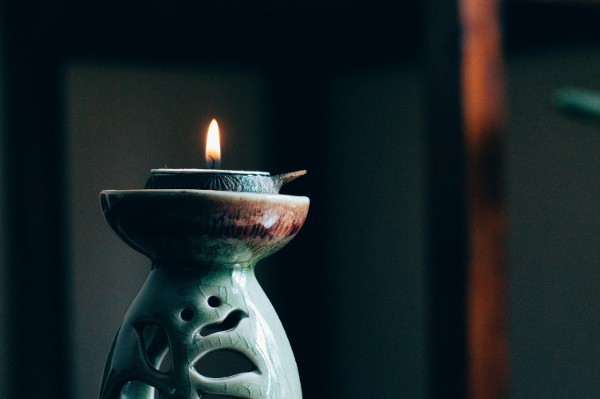
Medieval medicine and cultural significance
In the Middle Ages, the use of cannabis and marijuana in medical practice continued to spread. Herbalists and healers appreciated the diverse properties of the flowers, which were used to treat various ailments. At the same time, cannabis also gained cultural significance, influencing art and literature and finding its place in folk medicine. Cannabis was used in the Middle Ages as part of herbal medicine. It was used to treat various ailments, from pain to sleep disorders.
Medical recipes and writings from the Middle Ages indicate that cannabis was used to alleviate pain, inflammation and even psychological complaints. Herbal medicine and the use of various plants, including cannabis, were firmly rooted in medieval herbal medicine. Cannabis may have played a role in some medieval religious contexts. There is evidence that certain mystical groups or sects may have used it for spiritual or ecstatic practices.
The cannabis flowering in the 19th century: Influence on medicine and industry
Through trade and colonial expansion, cannabis became better known and more widespread in various parts of the western world. The 19th century brought with it increased scientific research into cannabis flowering. Science began to focus more intensively on the chemical components of cannabis. In the 1830s, the British chemist Robert S. Cahn isolated cannabinol (CBN) for the first time.
Medicinal preparations were developed and cannabis was used in Western medicine to treat pain, insomnia and other ailments. At the same time, the plant was used as a raw material in the emerging textile industry. There were also the first attempts to regulate and control cannabis, especially in connection with its use as a medicine.
Its use had hardly any side effects and was very diverse, reflecting the social, medical and industrial developments of the time. It was a time when cannabis was not yet subject to legal restrictions.
The 20th century: Regulation and prohibition
In the early years of the 20th century, cannabis continued to be used as a medicine in many parts of the world. In the US, it was included in various medicines and tinctures, and available in pharmacies. Extracts were used therapeutically and even early health insurance companies recommended or covered the cost of treatment with dried flowers for patients with chronic conditions.
However, the 1930s brought a drastic turnaround in the history of cannabis and marijuana. With the introduction of the Marihuana Tax Act in the USA in 1937, an era of regulation and prohibition began. International agreements followed that severely restricted and criminalised the cultivation, sale and use of cannabis. The century was characterised by a dramatic change in attitudes towards cannabis flowering. From its widespread use in medicine and industry at the beginning of the century to its increasing stigmatisation and criminalisation in many parts of the world.
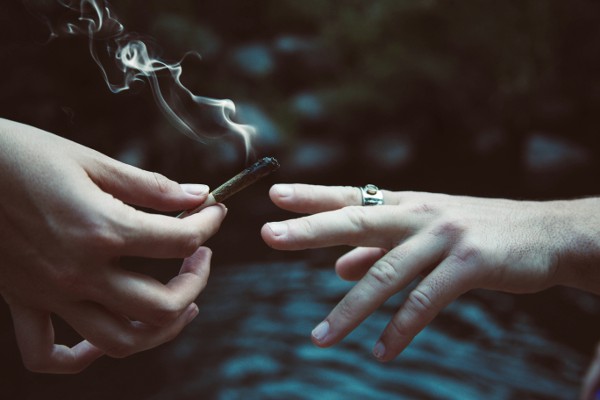
Hippie movement of flowering cannabis
In the 1960s, the cannabis flowering experienced a renaissance thanks to the hippie movement. Marijuana became a symbol of freedom, peace and rebellion against social norms. The association of cannabis with music festivals, art and alternative lifestyles increased its influence. The 1960s saw a cultural shift in which cannabis played a central role in the counterculture and the hippie movement. The use of marijuana was associated with freedom, peace and rebellion against social norms.
In the 1980s, the so-called "drug war" intensified in the USA and other countries, which led to increased criminalisation of cannabis. Marijuana was wrongly regarded as a "gateway drug" and penalties for possession and sale were made extremely severe.
Renaissance of cannabis sativa in the 21st century
The 21st century marks a new era in the history of medicinal cannabis flowers, with renewed interest in the medical sector in particular. Various researches reveal the potential of cannabinoids such as CBD in the treatment of epilepsy, pain and mental illness. More and more countries are legalising medical cannabis, leading to a wider recognition of the use of cannabis as medicine in therapeutic applications. Many countries, as well as American states, have legalised medicinal cannabis so far in the 21st century. Patients are finally gaining easier access to cannabis flower and other cannabis products for the treatment of various conditions.
Social perception has also changed in many parts of the world. It is increasingly seen as a medicine rather than an intoxicant. Destigmatisation and an open discussion about marijuana have led to a change in public opinion.
The cannabis plant in recreational use
Recently, the view of cannabis flowers has also changed with regard to recreational use. Many countries and states have begun to legalise the recreational use of cannabis. This has led to a flourishing market and a change in the perception of cannabis as a recreational substance. It is smoked, inhaled with a vaporiser or taken orally. People can legally purchase, possess and consume cannabis flowers. Countries such as Canada, Portugal and several US states have fully legalised recreational use, while other countries are reviewing their laws in this regard. The trend worldwide is clearly going in the absolutely right direction.
Medicinal cannabis flowers - therapeutic use of pharmacies
Patients can now obtain cannabis products from pharmacies again. Medical use in particular is increasingly accepted and promoted in some states and countries. The products are often offered in special pharmacies or pharmacy departments that specialise in medicinal cannabis. In the United States, flowers and other medicinal products made from cannabis are offered in a so-called dispensary.
Access to medical cannabis is usually obtained through a doctor's prescription. A doctor can prescribe cannabis as part of a medical treatment, often when conventional therapies are not sufficiently effective. Medicinal cannabis, including cannabis flower, is subject to strict quality control and standardisation procedures. This ensures consistent and safe product quality.
In many pharmacies, patients can also receive advice from trained pharmacists. They can provide information on dosage, use and possible interactions with other medications.
Variety of strains and cannabinoid profiles:
Medical cannabis is often available in different strains with different cannabinoid profiles. This allows doctors and patients to select products that are better suited to individual needs.
Research into new therapeutic approaches:
The therapeutic use of cannabis flowers continues to be intensively researched. New studies and clinical trials are investigating the potential applications of cannabis for various medical conditions.
Acceptance and destigmatisation:
In some regions, the acceptance of medical cannabis has helped to reduce stigma and encourage more open discussion about its therapeutic applications.
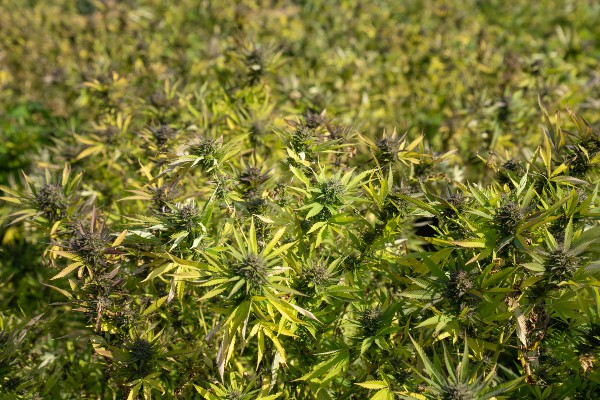
Botany of cannabis flowers: cannabinoids and terpenes
The history of cannabis flowers is closely linked to their botany. The identification of cannabinoids such as THC and CBD as well as terpenes has helped to understand the unique properties and effects of cannabis flowers. The synergistic interaction of these chemical compounds characterises the individual profile of each flower. Here is a brief explanation of the main active compounds present in cannabis flower.
Tetrahydrocannabinol (THC)
THC stands for tetrahydrocannabinol and is one of the psychoactive cannabinoids found in the cannabis plant. It is responsible for the intoxicating effect associated with the consumption of cannabis. THC interacts with specific receptors in the human endocannabinoid system, particularly the CB1 receptors in the brain. THC is known for its psychoactive properties, which can cause a change in perception, heightened sensations and a euphoric feeling. This effect is often referred to as a "high".
Effect: Psychoactive component, causes the respective "high" feeling depending on the THC content
Medical applications: Pain relief, against nausea, appetite stimulation
Cannabidiol (CBD)
CBD stands for cannabidiol and is one of over a hundred cannabinoids found in the cannabis plant. Unlike tetrahydrocannabinol (THC), CBD does not cause psychoactive effects, i.e. it does not lead to a "high" feeling. CBD has received a lot of attention in recent years due to its potential medical applications.
Effect: Non-psychoactive, has various medical applications
Medical applications: Anti-inflammatory, anti-anxiety, anticonvulsant
Cannabinol (CBN)
Cannabinol, or CBN for short, is another cannabinoid found in the cannabis plant. Like THC and CBD, it belongs to the phytocannabinoid family. Unlike THC, however, CBN is not psychoactive, which means that it has no intoxicating effect. CBN is produced by the oxidation of THC. This process can be triggered by exposure to light and oxygen during the storage or ageing of cannabis flowers.
Effect: Sedative, anti-inflammatory
Medical applications: Calming effect, sleep support
Cannabigerol (CBG)
Cannabigerol, or CBG for short, is another cannabinoid found in cannabis flowers. It is one of the lesser known cannabinoids compared to THC (tetrahydrocannabinol) and CBD (cannabidiol), but its importance in research is growing due to its potential medicinal properties. CBG is considered a "stem cell cannabinoid" or "parent cannabinoid" as it is a precursor to other cannabinoids such as THC and CBD. During plant growth, CBG is converted into these other cannabinoids by enzymes.
Effect: Non-psychoactive, anti-inflammatory
Medical applications: Possible neuroprotective effects, anti-inflammatory
Tetrahydrocannabivarin (THCV)
Tetrahydrocannabivarin, or THCV for short, is a cannabinoid that occurs naturally in some cannabis strains. It is structurally similar to THC (tetrahydrocannabinol), but differs in its pharmacological properties and potential effects. It can have a mildly psychoactive effect at higher doses, although this is less pronounced than that of THC. Some reports suggest that THCV in small doses may reduce the psychoactive effects of THC.
Effect: Possible appetite suppressant and stimulant properties
Medical applications: Appetite control, diabetes management
Cannabichromen (CBC)
Cannabichromene, or CBC for short, is a cannabinoid found in the cannabis plant. It belongs to the group of phytocannabinoids that occur naturally in cannabis. CBC has some interesting properties, although it is less researched compared to the better known cannabinoids such as THC and CBD. It is non-psychoactive, meaning it has no intoxicating effect. It does not bind strongly to the CB1 receptors in the central nervous system, which distinguishes it from psychoactive cannabinoids such as THC.
Effect: Non-psychoactive, anti-inflammatory
Medical applications: Pain relief, anti-inflammatory
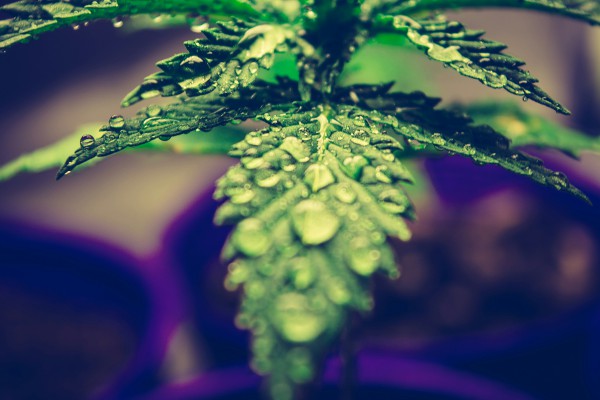
Terpenes in cannabis flowers and hemp
Terpenes are organic compounds found in many plants, including cannabis and hemp. These compounds are responsible for the characteristic odour and taste of different cannabis strains and also play a role in the overall effects of the plant. Terpenes are synthesised in the trichomes, the small resin glands on the leaves and flowers of the female cannabis plant.
Here are some common terpenes found in cannabis and their associated flavours:
Myrcene: This terpene has an earthy, musky odour and is also found in hops, thyme, mango and other plants.
Limonene: Limonene gives cannabis a citrusy scent and is also found in citrus fruits such as lemons, limes and oranges.
Pinene: This terpene has a piney odour and is found in pine, pine, larch and other conifers.
Caryophyllene: With a spicy, peppery aroma, caryophyllene is also present in black peppercorns, cloves and rosemary.
Linalool: Linalool has a floral lavender odour and is also found in lavender, mint and citrus fruits.
There are many other terpenes in different cannabis strains with different flavours and potential health benefits. These terpenes not only contribute to the flavour of cannabis, but can also interact synergistically with cannabinoids to influence the overall effects of the plant.
These cannabinoids and terpenes often work together in what is known as the 'entourage effect', whereby their effects can be amplified when they occur together in the cannabis plant. The individual profiles of cannabinoids and terpenes can determine the specific effects and flavours of each cannabis flower. A cannabis extract also enhances the effects of cannabis as a medicine.
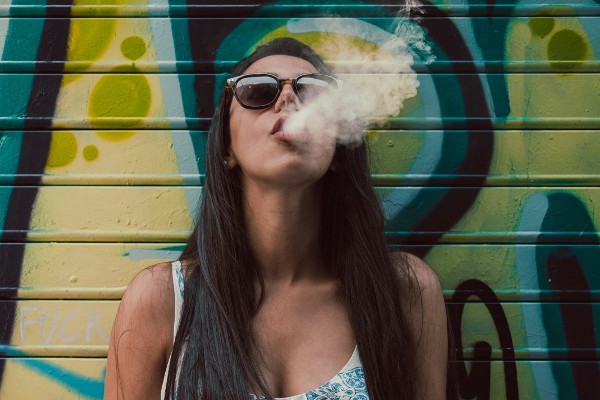
Future prospects and challenges
Despite the extremely positive developments, there are still challenges for the history of cannabis flowers. Issues of legalisation, regulation and research into combating chronic pain remain relevant. However, research into new cultivation methods and the discovery of new cannabinoids will certainly continue to shape the future of cannabis.
The history of cannabis flowers is rich in cultural, medicinal and social influences. From the spiritual practices of antiquity to modern legalisation, cannabis flowers represent a fascinating journey through human history that still has many chapters to write. One thing is clear: in addition to cannabis as a medicine and medical product, it must finally be removed from the Narcotics Act so that adults can decide for themselves how they want to deal with hemp and marijuana.


